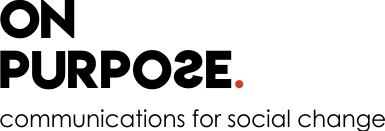On Dec 1, I had the privilege of moderating a discussion on ‘Turning Diversity and Inclusion Practices into Action’ with a fantastic set of panelists. Here are some learnings that may be useful to others:
1. Start with Why: Any change program in likely to fail unless we’re unable to recruit the people concerned as allies. This means starting from the top. We need to sensitise the leadership first and then the rest of the organization on why building a diverse and inclusive organization is not just the right thing to do, it’s also good for business.
As Madhumitha Venkataraman, a D&I Champion, put it, “Diversity begins with I/me and recognizing our unconscious biases.”
Yeshashvini Ramaswamy, Managing Director of e2e People Practices and a venture capitalist made no bones about Diversity and Inclusion (D&I), as an integral part of employee wellness, being the future.
I’d listen to her, she knows where the money is going.
Here are some more resources with evidence to demonstrate that D&I is good for business:
Why Diversity Matters – A McKinsey publication
Designing a Bias-Free Organisation – Harvard Business Review
2. Get Some Data: Measure the status quo of people employed in your organization broken down by different types of diversity dimensions for e.g. Age, Race and Ethnicity, Gender, Sexual Orientation, Religion, Disability, Personality, Socio-Economic Status, Education and Life Experience. Keep the data collection process anonymous to help those not yet comfortable with disclosing sensitive personal choices like sexual orientation or religion. It’s ok if the numbers aren’t pretty. The good news is now we can start making changes and measure progress.
3. Identify Areas Where Bias is Likely to be Rampant: Especially recruitment and talent management. Ban ‘culture fit’ as a reason for rejecting a candidate. Taking this from Jennifer Kim’s Linkedin Article on 50+ Ideas For Cultivating Diversity and Inclusion in the Workplace – “When interviewers want to reject candidates for ‘culture fit’ or ‘gut feeling’, it’s an indication that unconscious bias is at play. Also, review the recruitment language – scrutinize job ads for language that unconsciously discourages either men or women from applying. When it comes to appraisals and promotions, again, rely on hard data. Take the boss’s feelings about them out of the equation and objectively measure performance.
4. Articulate D&I as part of your DNA: There’s enough literature to confirm that companies with diverse talent are more innovative, dynamic and deliver stronger returns.
As Co-Founder of rydS, Madhu Menon said, “We’re all more interconnected than we think. We can’t afford to exclude anyone.”
This means stating your commitment to building a diverse and inclusive culture in your company messaging everywhere – on the walls, in the recruitment ads, how candidates are sourced, making it a part of the induction process so new employees understand why the company cares about D&I, printing inclusive bathroom signs, allowing flexible work hours and above all listening to employees and making an effort to hear everyone, not just the loudest ones.
“We don’t need namesake actions, we need deeply-rooted policy and a different culture.” Aparna Prasad, Director HR at Jain University echoed.
5. Constantly look in the Mirror: We’re all a bit inherently biased. We have to avoid the temptation to only listen to and connect with ‘people-like-me.’
Priya Chetty Rajagopal, CxO Consultant and Co-Founder of Multiversal Advisory had some strong words for leadership teams, “Just spend one day a month walking in someone else’s shoes, doing what they do and you’ll know what to do to make your organization inclusive”
Hiring employees with varied perspectives and backgrounds is only one step. How we make everyone feel valued and embrace group differences will determine how our workforce is empowered.
Dolly Koshy, a thought leader on Gender Neutral Perspectives said, “Diversity is being invited to the workplace. Inclusion is being allowed to re-arrange the furniture”
Speaking on the issue of mental health in the workplace, Ashwini NV, Founder of Muktha Foundation said, “Like physical first-aid, we also need psychological first-aid.”
Representing LGBTQIA concerns, Prashant Y of Solidarity Foundation said, “We may have the skill-set, but we may not have requisite documentation to get the jobs.”
LGBTQIA activist Suman Sana agreed, “Post #Section377, there are policies on paper, but their practice still lags behind terribly.”
“The constant fear is – how will I be treated if I reveal my positive status?” PLHIV ctivist and radio-jockey, Radha Mani expressed her concern
Sonali M Balgi, an engineer and mother of an autistic child spoke about sensitizing the workplace with the needs of persons with disabilities and their caretakers.
Sandesh H.R. from Enable India demonstrated a range of examples of how organisations were making workplaces disabled friendly and how targeted training and solutions could help. For more information, click here: Enable India
As Deepa Narasimhan, Head of Diversity and Inclusion at DellEMC said, “D&I policies become actionable when there is dialogue. In India, we have a long way to go and taking action is the only way to really change anything.”
Thank you to RadioActive and the Deputy British High Commission of Bengaluru for hosting.

